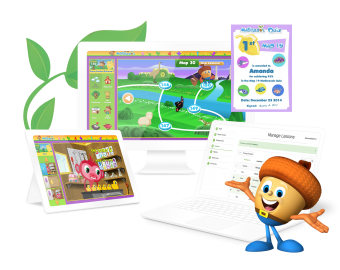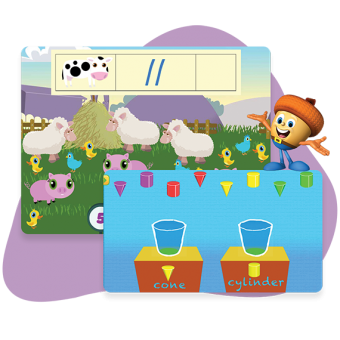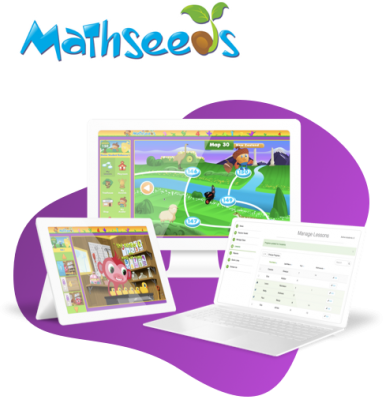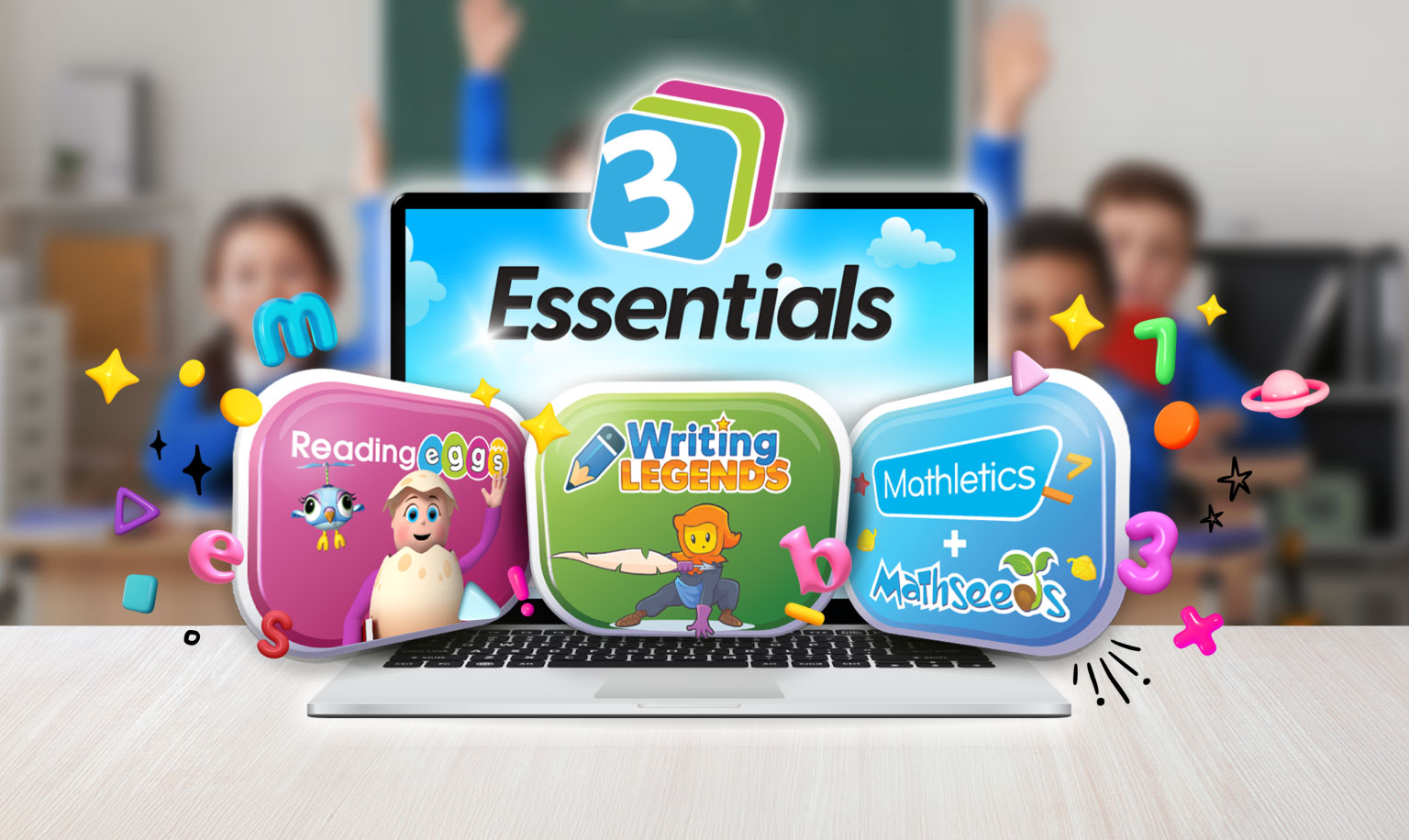
It’s 9.30am and you’re ready to begin the first activity of the day – mathematics. You’ve got everything set. But halfway through the lesson, your class of early learners start getting distracted and disengaged.
We’ve all been there. You’ve spent hours planning the lesson, yet students are not engaged. It can be difficult making sure that classroom activities are multisensory, engaging and include step-by-step instructions, to meet the needs and development of early learners.
This is what sets Mathseeds apart. It’s specially structured and designed to the needs of early learners aged 3 and above. It provides excellent scaffolds to support their needs, making it a great mathematics software for early learners.
Planting the Seeds of Mathematics Fundamentals
Not convinced? Keep reading to find out 8 ways Mathseeds makes an effective and engaging mathematics teaching resource in any early learning classroom.
1. Supports Student-driven Learning through Structured Learning Pathway
Every student learns at a different pace. Mathseeds considers this by placing each student at the right level from the start with a placement test. From there, students work through a sequential learning path, where they are guided along by step-by-step lessons catered to their current mathematics level. This means they can learn and achieve their best without being bored or overchallenged.
Each lesson targets a specific mathematical competency and builds on the previous lesson’s skills and concepts. So if students struggle with a lesson, they have a choice to repeat it again. They are not forced to progress when they are not ready, allowing them to take control of their learning. Teachers can also assign students lessons to match learning in the classroom.
2. Reinforces Correct Mathematical Thinking through Immediate Feedback
Part of the Mathseeds learning pathway is offering immediate feedback when students answer a question incorrectly. This reinforces correct mathematical thinking on the spot. For example, at the end of all lessons, students are quizzed on what has been taught, helping them consolidate new concepts and skills.
As they progress through their learning pathway, students also get to demonstrate their understanding through informal and formal assessments. These assessments increase in difficulty by gradually removing scaffolds like visual reminders.
All the above feedback allows students to understand where they went wrong, evaluate their incorrect responses and try again. For teachers, it is a great tool to monitor and assess where students’ learning gaps are.
3. Intrinsic and Extrinsic Motivators To Keep Students Engaged
Students are intrinsically motivated to complete their learning pathway in Mathseeds because of how it is structured. It provides them the choice to complete lessons on their own, giving them a sense of ownership. When learners challenge themselves and are able to complete the lessons that they choose to do on their own, it leads to a sense of accomplishment.
To build on intrinsic motivation, Mathseeds uses extrinsic motivators as well. For example, students earn Golden Acorn rewards in the activities which can then be used to add items to their treehouse or avatar. Merit certificates are awarded based on students’ end-of-lesson quiz scores, which they can choose to redo again if they wish to improve their score.
4. Narrated Instruction Caters to Emergent Readers
As early learners are still decoding letters, sounds and words, it can be difficult to learn and understand new mathematical terms. Mathseeds solves this by incorporating narrated instruction in every step of their learning pathway.
With clear voice narration by one of the key Mathseeds characters in each lesson, early learners can develop mathematics skills without being marked down for their reading ability. As students continue along their learning pathway, there are videos and games help them understand new mathematical expressions, vocabulary, and word problems.

5. Multimedia Elements Appeals To Different Types of Learners
How well students process and retain information is directly related to their learning styles (Manner, 2001). Mathseeds understands this and provides a variety of mathematics content, using technology, visual design and multimedia elements to appeal to different learning styles.
High quality, colourful animations are thoughtfully incorporated to appeal to the visual learner. For auditory learners, they can listen and sing along to familiar nursery rhymes in the Mathseeds Playroom, reinforcing counting and simple mathematical concepts such as days of the week.
6. Lays the Foundation for a Growth Mindset
Mindset begins in the early childhood years, from around the age of 3. Students with a growth mindset are not tempted to give up when things get hard and do not shy away from challenges. How does Mathseeds lay the foundation for this?
On their learning pathway, students are allowed to revisit their mistakes again and correct them. They can repeat lessons and keep going as many times as they want. It is also structured to allow students to learn at their own pace without ever feeling out of depth. And if they are stuck, teachers can reset the pathway to let students attempt lessons which are catered to a level they are more comfortable with.
7. Connects Mathematics To Everyday Lives
When students see how they can use mathematics as a tool for solving problems in their everyday lives, it makes them interested and invested in learning the subject, because they see the importance of it.
Through 150+ lessons and 350+ activities, Mathseeds sparks curiosity and connects mathematical concepts to everyday life. Whether it is choosing the right bus as it drives by, to feeding birds the correct number of worms, new concepts and skills are taught in a context that is relevant and familiar to young learners.

8. Adaptable To Different Classroom Settings
If your school uses rotation teaching in the lower primary levels, let Mathseeds do the heavy lifting. You can use it for students to work independently, or it can be used with a whole class or a focussed group lesson to encourage group participation.
In a remote or hybrid learning setting, Mathseeds seamlessly connects learning between school and home across a range of digital devices. You can easily assign tasks that align to your teaching focus or set an objective.
The extensive suite of reports in Mathseeds also allows you to monitor and track students’ growth and provide useful feedback and data to parents, and schools. You can easily view your student’s mathematical progress with a simple “dashboard” in Mathseeds and use this to show parents.
Want to take learning offline? Save time with Mathseeds printable resources in the Teacher Toolkit, where you get access to lesson plans, workbooks, and worksheets, to print off and use with your class.
A Proven Effective Online Mathematics Software For Early Learners
Mathseeds learning pathway makes it a comprehensive walk-up start for early learners and proven to be effective in improving early learners’ mathematical skills.
In a study done, results showed kindergarteners using Mathseeds displayed more growth in mathematics skills compared to students who did not use Mathseeds.
Teachers involved in the study also strongly agreed that Mathseeds was easy for students to use, engaging, helpful in teaching students, motivating, and contributed to students’ confidence about the subject.
References:
Manner, B. (2001). Learning styles and multiple intelligences in students. Journal of College Science Teaching, 30 (6), 390–393

Watch your class learn, grow and succeed with Mathseeds.





